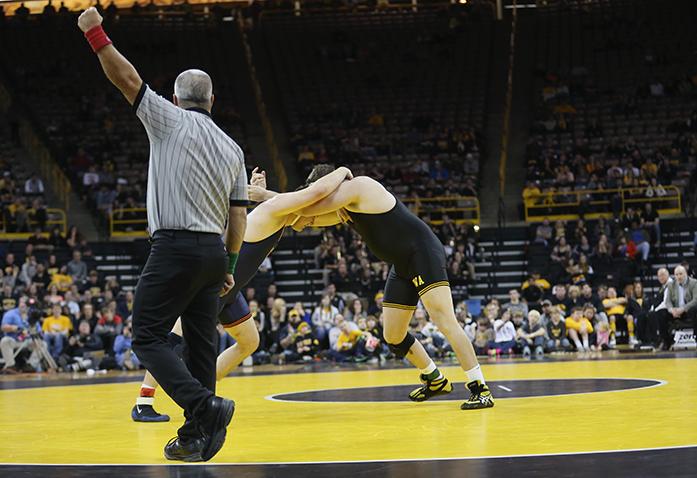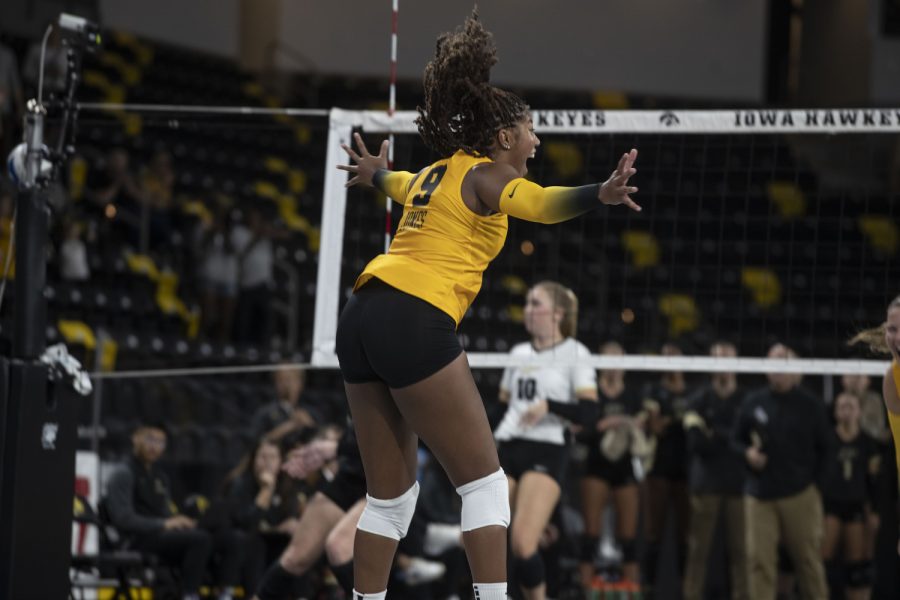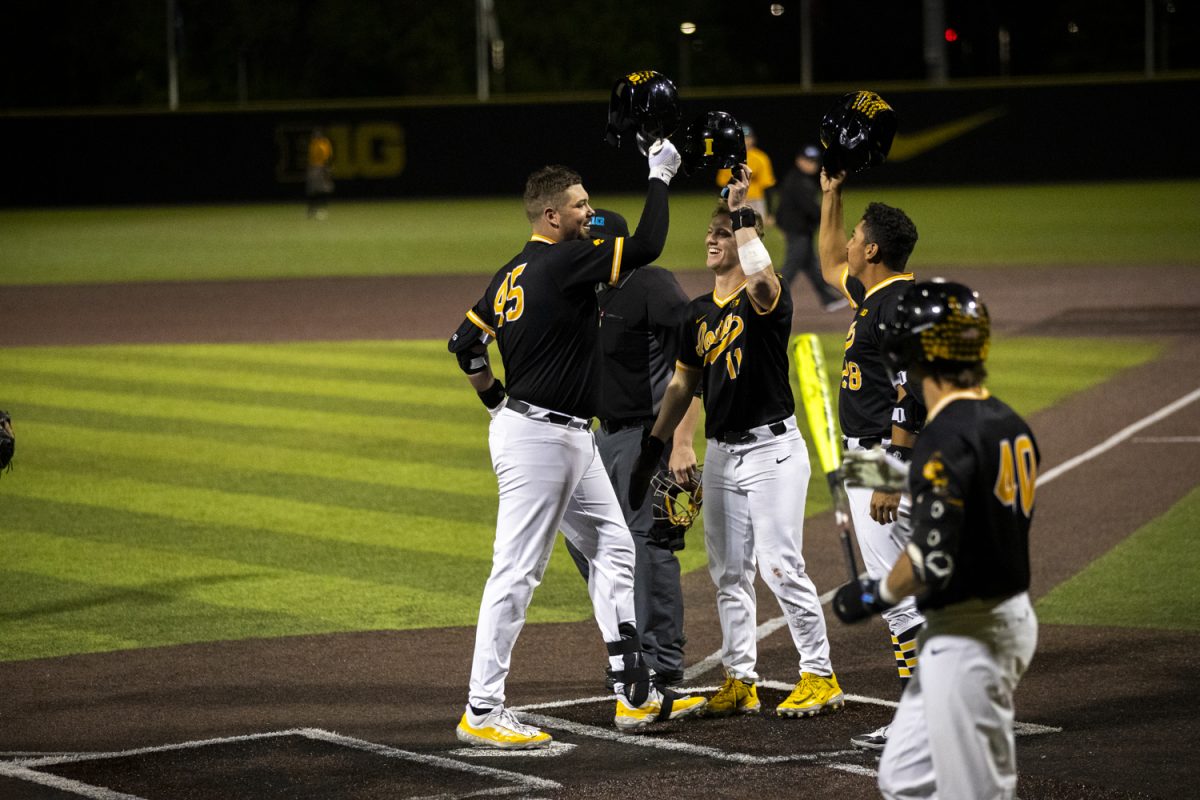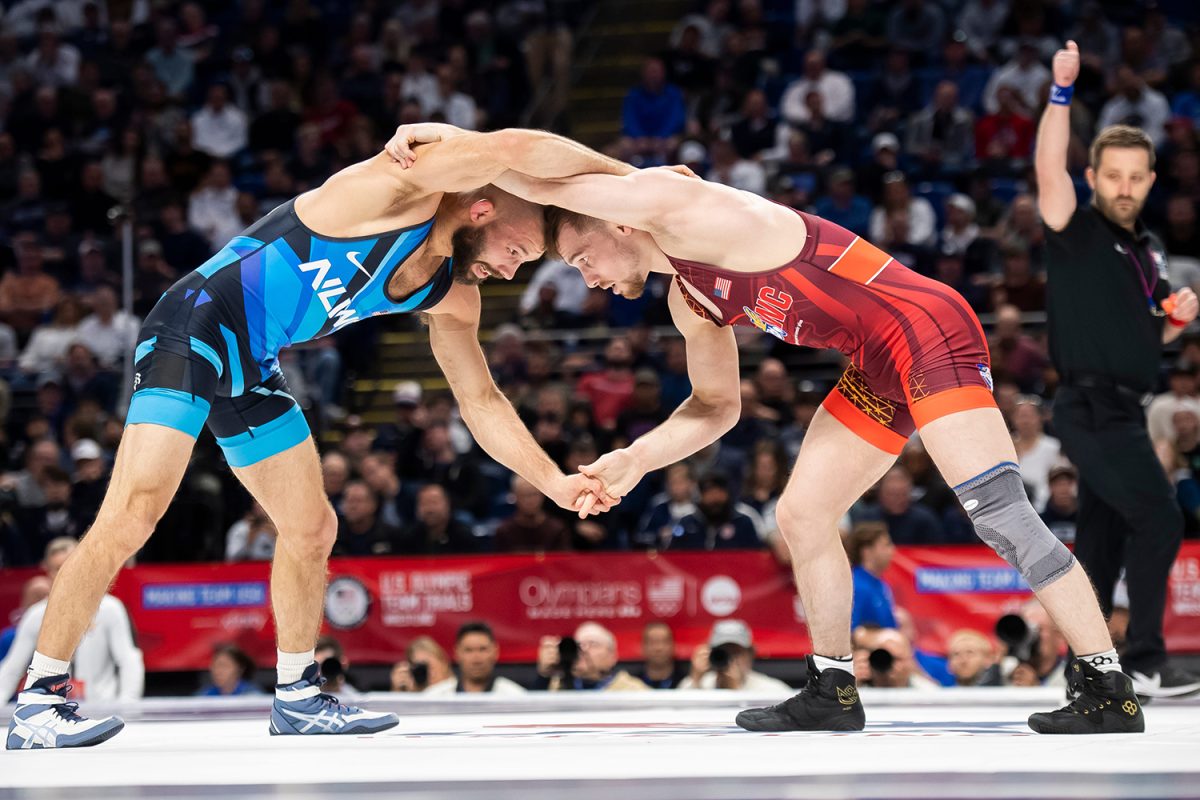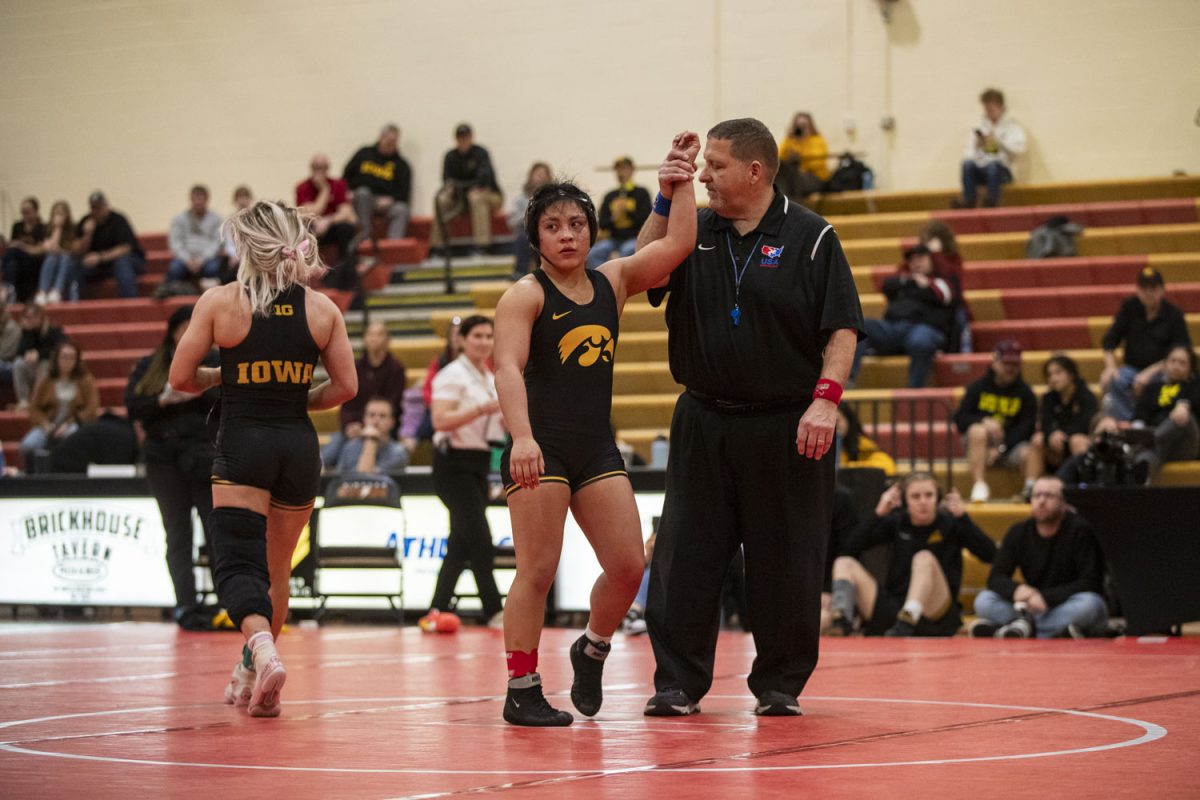By Jordan Hansen
So far this year, several rule changes dealing with stalling are affecting some of Iowa’s wrestling matches this season.
Twice this year, an opposing wrestler has been disqualified in a match for accruing too many stalling calls. Stalls have been called with more frequency this season, which bodes well for the Hawkeyes’ aggressive style.
“We have been on the benefiting side of the rules more than not. First of all, it’s what the program’s about — you own the center of the mat,” Iowa head coach Tom Brands said. “Second of all, when new rules come out, we coach to them, and our guys are very aware.”
Dominating opponents in the center of the mat means lots of takedowns, lots of action and lots of points. Those are among the things wrestling fans enjoy the most and stalling takes away the watchability of a match for many.
One of the rules instituted by the NCAA rules committee was the neutral-position stalling rule. It was used experimentally at the 2014 All-Star Classic and made official this year.
“When wrestling is stopped in the neutral standing position for going out of bounds, the referee can make one of the three following calls,” the NCAA said in a release. “Stalling on one or both wrestlers for leaving the wrestling area. Stalling for pushing or pulling the opponent out of bounds. Wrestling action is taking place.”
Action is being pushed to the inside of the mat as wrestlers don’t want to give up easy points on edge of the mat.
However, even with it benefiting Iowa, Brands still has a few qualms with how it’s being implemented.
“What’s going to happen is guys are going to learn to stay in the center, they’re not calling stalling in the center of the mat,” he said. “So even if a guy is going backwards at the center of the mat, and they’re stalling, they’re not calling it because now all they’re looking at the edge of the mat.”
The second rule attempt to fight stalling is called the drop-down. It tries to stop wrestlers from hanging on to ankles and legs, which results in less action.
In five matches against Division-1 programs this season, the changes have been obvious. Iowa has tallied 14 stalling calls, while opponents have been hit with 54.
Referees want to see more movement and have been making more calls. Getting wrestlers to move around and create action is the point of adding more rules.
“It can get kind of annoying if a guy is just sitting there and holding you,” Iowa 197-pounder Nathan Burak said. “But you can’t let it get to you, and you have to stay focused.”
For the most part, the wrestlers say the rules haven’t caused any major changes in how they approach duals. This is because the mindset among the team already is to be aggressive and force the other teams to either stall or be aggressive. Iowa has done that for years, and it is a fundamental part of the program.
The Hawkeyes will continue to push the pace of matches as they always have and this season, it’s proving even more costly to other teams.
“You wrestle at a high pace like we like to in this room,” Iowa heavyweight Sam Stoll said. “Good things will happen.”
Follow @JordyHansen for Iowa wrestling news, updates and analysis




